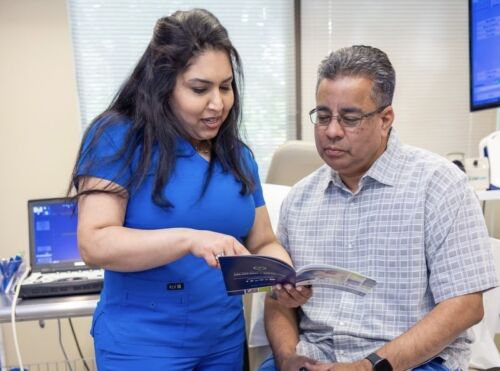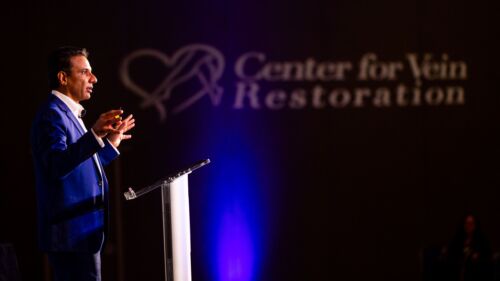Do you notice more varicose veins on your left leg than on your right? Here’s one medical theory to explain why that happens.
Varicose veins can develop anywhere on your body, including on both legs. But some patients have reported seeing more varicose veins on their left leg than on the right.
No one knows for sure why this happens. The important thing is that regardless of whether your varicose veins appear more on the left or right side, you should consult with a vein specialist about treatment, especially if the veins are causing any pain and swelling.
Why the left side?
According to one medical theory, a patient may see more varicose veins on their left leg, mainly because more veins are on that side of the body.
But let’s rewind and set the context: Our hearts consist of four chambers, with two on each side. The right-side chambers take oxygen-depleted blood from the veins and pump it to the lungs, which fill the blood with oxygen again while removing carbon dioxide. The left-side chambers then flush the oxygenated blood to the organs and tissues via arteries. The blood is then returned to the heart with the help of tiny valves within veins.
Due to the way the blood is pumped from the heart, there are more veins in the left leg. But that doesn’t mean varicose veins won’t appear on your right leg. When it comes to why varicose veins develop, the answer is more than just your anatomy.
So why do varicose veins develop?
As mentioned earlier, tiny valves inside your veins help push blood against gravity back towards the heart. When these valves lose strength, blood backflows and pools within the veins, forcing the veins to swell. Eventually, a varicose vein forms. Even if you don’t see a visible varicose vein, your legs may feel achy and heavy.
One leg isn’t more prone to varicose veins than the other. Vein valves can weaken in either leg from several factors, including:
Age. The valves gradually lose strength and elasticity as we grow older.
Sitting or Standing All Day. Sitting or standing for long periods allows blood to become stagnant in the veins. Also, your calf muscles support the veins to pump blood, so not engaging your calf muscles can weaken your vein valves.
Gender. Women tend to develop varicose veins more often than men because of powerful female hormones and hormonal fluctuations during pregnancy and menopause.
Genetics. If your family members have varicose veins, there is a chance that you may inherit those genes.
Weight. Carrying excess pounds strains your veins and the valves within them.
Injury. An injury to your leg can damage or weaken the veins.
But there’s good news! Varicose veins are easily treatable through various proven vein treatment methods performed in a qualified vein care facility. Today’s technology allows these techniques to be minimally invasive or non-invasive, so you can quickly return to your normal activities with minor restrictions.
Time to treat your varicose veins!
Aside from their unsightly appearance, varicose veins can be painful and, if left untreated, lead to serious complications such as open sores. Don’t delay in freeing yourself from tired, swollen, achy legs. At Center for Vein Restoration, we offer various surgical and conservative treatment options that fit your needs and lifestyle. Contact us today for a consultation!

 About Vein Disease
About Vein Disease
 Spider Veins
Spider Veins
 Varicose Veins
Varicose Veins
 Vein Disease Treatments
Vein Disease Treatments
 Treating Spider Veins
Treating Spider Veins
 Treating Varicose Veins
Treating Varicose Veins
 About Us
About Us
 Patient Resources
Patient Resources
 Physician Resources
Physician Resources


